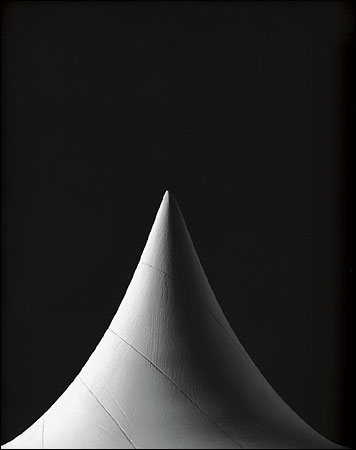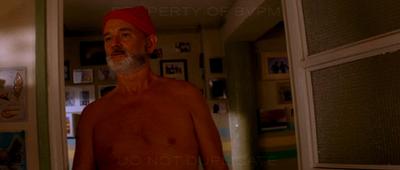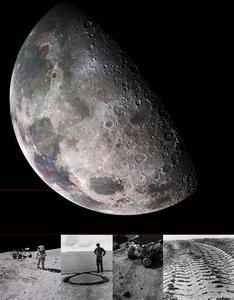Philip Johnson called himself a whore, partly to diffuse critics who didn’t like his constantly changing style or his intense curiousity in pursuit of new architectural ideas.
Apparently, though, it didn’t save him from an eviscerating obituary in the Guardian at the hands of Andrew Saint. Unlike Homer Simpson–who likes his beer cold and his homosexuals flaming–this venal Cambridge architecture professor prefers his beer warm and his homosexuals safely confined to those four years of British public school, thank you very much. At least that’s what the whole obituary is about.
Saint’s acid conflation of the evils of gayness, inherited wealth, corporations, aesthetics, modernism and Nazism was enough to drive archinect’s Javier Arbona to the typewriter to call Saint to repentance.
Philip Johnson: Flamboyant postmodern architect whose career was marred by a flirtation with nazism [Guardian]
A response to Andrew Saint, by Javier Arbona [archinect]
[update: In a NYT op-ed, Mark Stevens says basically the same thing as Saint, but with more quotes and less gay.]
Author: greg
Things To Watch, Advertisers To Thank
Noah Baumbach on ‘The Squid and the Whale’
The writer-director Noah Baumbach, 35, based the film on his own experience of his parents’ divorce. He said that he had struggled for years to find his voice as a filmmaker after making Kicking and Screaming in 1995 but had an epiphany at a screening of the Louis Malle classic Murmur of the Heart, organized by his friend Wes Anderson (a Squid producer).
“I thought I should deal with this moment in my life,” he said after an early morning screening on Wednesday. “But it’s why it took me a long time to get it done. There was a censor in me, not in a literal way, more in general, wondering what people might think and who would care – it’s only my story. Letting go of that censor was really important; personally, it was a breakthrough.”
Mr. Baumbach’s mother, Georgia Brown, was a film critic for The Village Voice, and his father, Jonathan, is a film critic and novelist who teaches at Brooklyn College. Neither parent, as portrayed in the film, is particularly sympathetic. Mr. Baumbach said it was all right with his real-life parents “because they’re writers.”
The director had [Jeff] Daniels borrow some of Jonathan Baumbach’s clothes for his wardrobe. “I liked to use things that connected me to that time, in a Proustian way,” he said. [nice. -g.o]
Discussion of an actual film, buried in Tony Scott’s nerdy “Sundance is all about scamming free stuff” article.
On Jem Cohen’s ‘Chain’
Chain, was directed by Brooklyn-based filmmaker Jem Cohen. The movie tells the story of a pair of women seemingly stranded in an instantly familiar, parking lot-filled landscape of big box retail stores, fast food restaurants and malls. It looks like it could have been made in one pass through AnySuburbanTown, USA, but it was actually shot in 11 states and seven countries over seven years.
Don’t miss the unintentional National Security subplot.
Chain, dir. by Jem Cohen, is screening at the Curzon Soho in London on Feb. 8. It showed at MoMA Gramercy in a 3-screen format last year.
All the world’s a car park [Guardian, via archinect]
Wendy Mitchell on Jem Cohen’s Chain Times Three at MoMA [IndieWIRE]
Miuccia Pravda
What with all the access preserving, the source stroking and the advertiser cultivating going on, I guess I shouldn’t be surprised at the utter lack of real context or actual reporting when it comes to fashion.
Stories about Helmut Lang’s split with Prada dutifully transcribe Patrizio Bertelli’s party line about how unprofitable Lang’s line had become, thanks to his “reputation for being stubborn, refusing to work with fabrics or techniques he deemed inferior even if lower costs would help the bottom line.” Meanwhile, Bertelli, who has clashes with any designer not his wife, is “an intense and uncompromising businessman dedicated to improving the performance of the brands Prada acquired.”
The magic formula, of course, was–and still supposedly is–high-margin accessories and fragrances. Um, yeah, but that’s the same story Prada was telling when they bought control of Helmut Lang’s business six years ago. And didn’t I buy Helmut Lang fragrances several times in a Helmut Lang Fragrance Store across Greene St from the original boutique?
These multi-luxury brand companies are managed like portfolios, with their different brands positioned to complement and offset each other. Problems arise when these brands are highly correllated, and they end up competing instead. That can throw a portfolio’s performance out of whack.
By buying Jil Sander and Helmut Lang, Bertelli wasn’t just expanding the reach of Prada’s empire; he was co-opting any potential rivals for Miuccia’s own throne. If Lang’s sales suffered under Prada management, maybe it’s because they forced his brand down market and out of direct competition with Prada both on price and quality. After the 1999 deal, Lang’s clothes dropped 20-30% in price, but the quality easily dropped in half, especially on the menswear side. I tried for a couple of seasons to keep buying his suits, but they just sucked. Lang had been transformed into basically a Prada bridge line, Prada University Club. The kicker, of course, was that even though it cost more, Prada’s menswear also sucked, thanks to Bertelli’s commitment to the bottom line.]
Given Bertelli’s evident management biases and track record, is it any wonder about why Prada has such a hard time going public? Damn, but that company pisses me off.
Helmut Lang to split from Prada [IHT]
Question for Prada: Now What? [NYT]
Yet Somehow, His Wife Just Didn’t Understand
“There’s a certain enjoyment in facing death, periodically.”
– actor Robert Blake discussing–no, but good guess–discussing his appearance on The Tonight Show with Johnny Carson, as quoted in a 1978 New Yorker profile by Kenneth Turan. [Day-um. Turan kept a Carson Watching Journal in 1976 that uses words–in his JOURNAL–like ‘exordium’? It’s like College Bowl meets Television Without Pity.]
Bonus celebrity murderer mention: O.J. Simpson
What Sharon Waxman Heard At Sundance
As people were rushing away from her or avoiding her while they were caught up in a bidding war at Sundance for the Craig Brewer-directed, John Singleton-produced Hustle and Flow:
“The adrenalin is flowing,” David Dinerstein, co-chairman of Paramount Classics, tossed over his shoulder as he hurried out of the screening…
Specialty movie executives went barreling from the hall to their cell phones, then back into the hall to make initial offers to the United Talent Agency agents…
“This is torture,” mouthed the Focus executive John Lyons…
In the true indie spirit of Sundance, the previously unknown Singleton–who financed the $3.5mm film himself–got a $17 million, three-picture deal with scrappy upstart distributor Paramount. Reports Ms. Waxman, “Mr. Singleton gleefully boarded a charter jet, paid for by Paramount [obviously, Singleton has points against gross, not net] to return to the set of his movie Four Brothers in Toronto.
Note: Heisenberg’s Principle is obviously suspended for the two weeks at Sundance; the NY Times Hollywood correspondent’s attending the crew’s pre-screening dinner, the screening, and the afterparty, and chasing down the principals during negotiations in now way influenced the outcome.
Wee-Hours Wheeling and Dealing at Sundance [NYT]
Quentin who? Uma Who? Now on WPS1
While the entire New York film world was focused on my Reel Roundtable screening of greg.org-as-videoblog January 10th, the Museum of Modern Art, in a moment of magnanimosity, hosted a discussion with the obscure director Quentin Tarantino and one of his muses, the equally unknown Uma Thurman. It was the inauguration of their new series, “Great Collaborations.” Here’s hoping them all the best success, and that they’ll eventually be able to rope in some recognizable names.
Any-who, since I’m pretty sure nobody was there, WPS1 is offering the first chance to hear Uma and Quentin talk about their work together.
Great Collaborations: Quentin Tarantino and Uma Thurman [WPS1.org
So It Was A Scripted Screwup?
My favorite IFP Spirit Awards moment was two years ago, watching some young, dumb AMW whose agent thought she needed some indie cred (it turned out to be Brittnay Murphy, unrecognizable to me as the loozah Jersey girl in Clueless) introdue a nominated film. She lost the teleprompter, and froze.
After a panicky moment where her plea for help took the form of a narration to no one in particular (and everyone, of course) of her own predicament, they cut away. When they cut back, she’d decided to adlib, and rambled, as wacky as all get out. Quick cutaway again. When they returned to her a final time, she’d obviously been slapped out of it by someone and turned into a pod person. Close call! If Joe Roth had ever seen–or heard of–the IFP, Murphy would never have scored the lead in Little Black Book.
Now we learn from Richard Rushfield’s NY Times report on the IFP’s transformation into the practically-the-Oscars, that “presenters are encouraged to ignore the scripts provided them and fumble freely.” Uh-huh.
It All Depends On What You Mean By ‘Independent’ [NYT]
Scratch Frears From The ‘I’ll Never Make A Musical’ Club
Stephen Frears, the rather gritty naturalist British director, is finishing his first musical, Mrs. Henderson Presents, which tells the story of a London burlesque-like theatre during the Blitz.
I get cheered up when I hear stories of people who didn’t want to make a musical making a musical, and in the NY Times, James Ulmer’s October visit to the set reveals a bit of how Frears did it. One key was taking a page, literally, from Hollywood:
[Frears said] “Alan Parker once told me you can wing a movie, but you can’t wing a musical. So yes, I did feel trapped.”
Until, that is, he and his team discovered a book and saw a documentary on the world of Arthur Freed. From the 1940’s to the early 1970’s, Freed’s ability to lure top actors, directors, choreographers and composers to work cheek-by-jowl in his MGM production offices delivered such classic musicals as Singin’ in the Rain, Meet Me In St. Louis and Gigi. The Freed Unit created Hollywood’s first and greatest musical repertory company, and counted Judy Garland, Mickey Rooney, Gene Kelly and Busby Berkeley in its fold. That model gave Mr. Frears the key he had been searching for.
“Freed had figured out that you must have all these creative people working together in the same room,” the director said. “You can’t do it right unless they’re all present and thinking the same way. So I got everybody into the same place – the writer, composer, musical director and choreographer – and worked it all out. Thank God we read that book.”
That book, I’m guessing, is Hugh Fordin’s expert M-G-M’s Greatest Musicals: The Arthur Freed Unit and the documentary is probably Musicals Great Musicals by David Thompson, a global public tv-style puff piece which is not as informative, but is still pretty and entertaining.
We just caught the end of Signin’ In The Rain on TCM, so my Freed awe factor is running kinda high right now. [Musicals Great Musicals is included in the Singin’ In The Rain 2-Disc DVD, by the way.]
A Pile of Rubble Topped by Nudes. Now That’s a Musical! [NYT]
Hell, It Would’ve Been An Honour To Be SEEN
Things don’t look good–and some things can’t be seen at all–in Jacob’s critical look at the BAFTA nominations. And the problem is the studios’ stupid MPAA-legacy DVD screener system.
Hero and Million Dollar Baby were left off top-10 lists and didn’t get a single nomination for anything, while House of Flying Daggers got nine. One possible reason? Studios didn’t send out DVD screeners at all.
The Life Aquatic didn’t get any nods, either, even though Buena Vista Pictures Marketing sent out screeners to all BAFTA members. The only problem: those DVD’s had “PROPERTY OF BVPM” and “DO NOT DUPLICATE” burned into every one of Anderson’s fanatically composed frames.
Occasionally, this is amusing–in the last of those images [on Yankeefog.com], you’ll notice that the back of Cate Blanchet’s shirt seems to be advertising her new biography, “I, Cate”–but most of the time, it’s even more incredibly distracting than you’d imagine from looking at the still images above. In every one of Wes Anderson’s carefully planned tracking shots, the most noticeable element becomes those big, unmoving letters at the top and bottom of the screen. Every one of his carefully composed static shots is thrown out of balance by their presence. It becomes difficult to notice Bill Murray’s wonderfully subtle performance, or Owen Wilson’s understated humor, because your eye keeps being drawn to the giant words hovering in front of them.
As if it could get worse the texts aren’t in Futura, Wes Anderson’s font of choice.
Looking Where The Light Is Good [Yankeefog.com, via kottke]
Related: Wes Anderson’s Favorite Font [greg.org pointing at kottke. kottke, kottke, kottke!]
Regard me at Regarding Clementine
I’m gonna be working at the Clementine Gallery as part of Choire’s show again today. If you’re in Chelsea, stop by and say hi.
Clementine Gallery, 526 W 26th st, Suite 211
Previously: Regarding greg.org at Regarding Clementine
Like Inviting A Hillbilly To Do Your Taxes
When Richard Hatch of Survivor fame [sic] got busted for failing to report his $1 million prize to the IRS, my mind raced back to some of the first tax advice I ever heard:
You.. can be a millionaire.. and never pay taxes! You can be a millionaire.. and never pay taxes! You say.. “Steve.. how can I be a millionaire.. and never pay taxes?” First.. get a million dollars. Now.. you say, “Steve.. what do I say to the tax man when he comes to my door and says, ‘You.. have never paid taxes’?” Two simple words. Two simple words in the English language: “I forgot!”
The title of this post pays homage to Mr. Hatch’s previous appearance on this website, which is hella funny.
Richard Hatch Hit With Tax Evasion Rap [thesmokinggun.com, via towleroad]
Steve Martin’s Monologe [snl transcripts]
On Smithson, Space & Time
Another cover from Life“the lunar surface photographed by the Apollo astronauts in 1969” yields a comparison to Smithson’s cover for Artforum published just a month later: a distribution of mirrors across a square of parched earth, one of a number of illustrations from his “Incidents of Mirror-Travel in the Yucatan.” Placing these images together, which speaks to an argument about travel as a form of cultural repetition that suspends an experience of the present, demands a great deal of archival legwork on Reynolds’s part.
-Pamela M. Lee writing about new books about Robert Smithson in “The Cowboy in the Library,” published in the Dec/Jan 2005 Bookforum. She’s referring to Ann Reynold’s 2003 book, Robert Smithson: Learning from New Jersey and Elsewhere, which draws intensively and creatively on Smithson’s archives at…the Smithsonian.
The image above is Moonworks, artist Craig Kalpakjian’s 2003 proposal for creating earthworks on the moon. Read about it in Issue Magazine. Craig’s got a show up through Saturday at Galerie Edward Mitterand in Geneva.
Lee continues:
In one of the most striking passages of art history I’ve read in a while, Roberts connects a Mannerist altarpiece Smithson studied at length with the abstract sculpture he began making in the mid-’60s, by bridging a discussion of Jacopo Pontormo’s Descent from the Cross, 1525-�28, a deposition image composed around the rotational forms of its sacral actors, to the spiraling forms and crystalline structures of works such as Gyrostasis, 1968. What connects them in Smithson’s oeuvre, Roberts argues, is their attitude toward the deposition of time: Pontormo’s languorous Christ now exhibits a “depositional temporality,” whereas the growth process of a crystal is itself called a “deposition.” It says something about Roberts’ gifts as a polemicist that she can make this leap wholly convincing for the reader. More art history should be written with the kind of imagination and verve displayed here.
Roberts is Jennifer Roberts, who wrote Mirror-Travels: Robert Smithson and History. Smithson’s sculpture Gyrostasis was recently on view at the Hirshhorn.
On Math & Art In France

Although Gustav Eiffel didn’t explicitly use one himself, an American engineering professor has come up with a mathematical expression for the shape of the Eiffel Tower, based on its creator’s own studies of wind resistance, torquing, and load transfer.
Which reminds me of the photos by Hiroshi Sugimoto at the Fondation Cartier, Mathematical Forms. They are monumental images of beautiful, little plaster stereometric models, which were created in 19th and early 20th c. Germany to illustrate complex trigonometric formulas. Several were published in the NY Times Magazine last month.
Elegant shape of Eiffel Tower solved mathematically [PhysOrg.com, via archinect]
Etant Donne: Le Grande Verre by Hiroshi Sugimoto through Feb. 27 at the Fondation Cartier
Hiroshi Sugimoto’s Mathematical Forms [NYT Mag]


